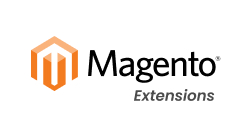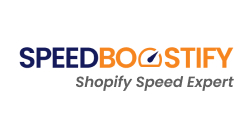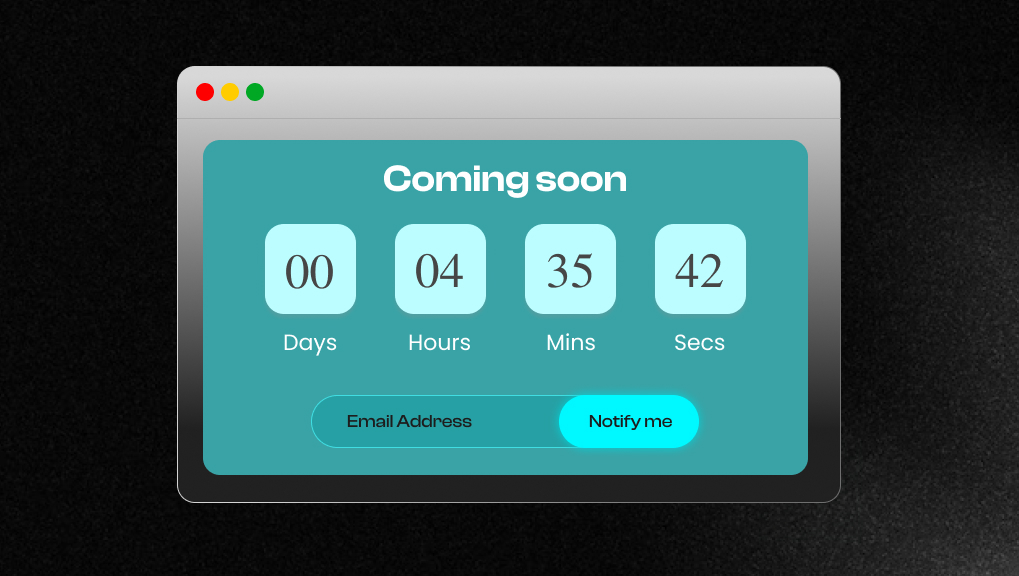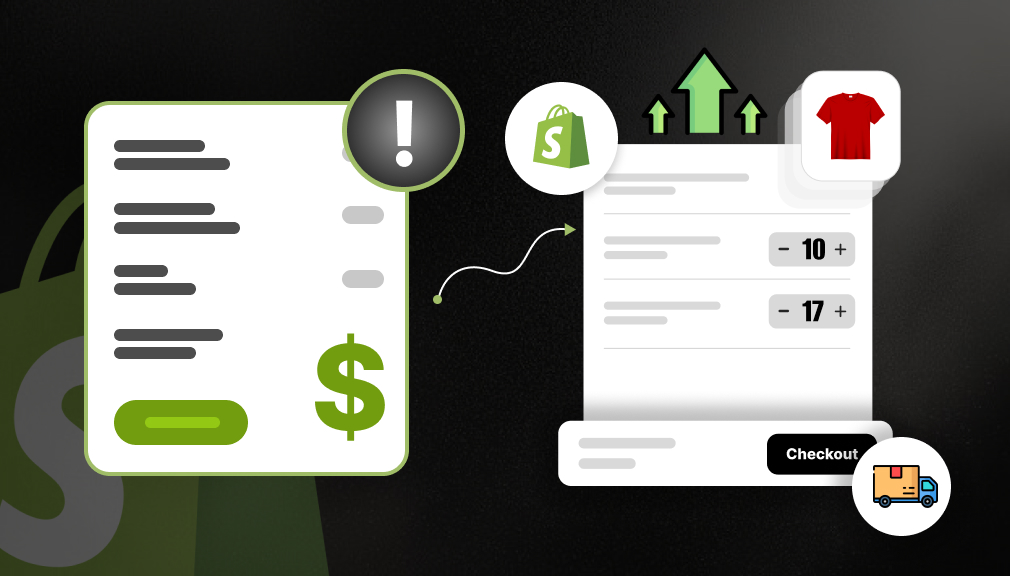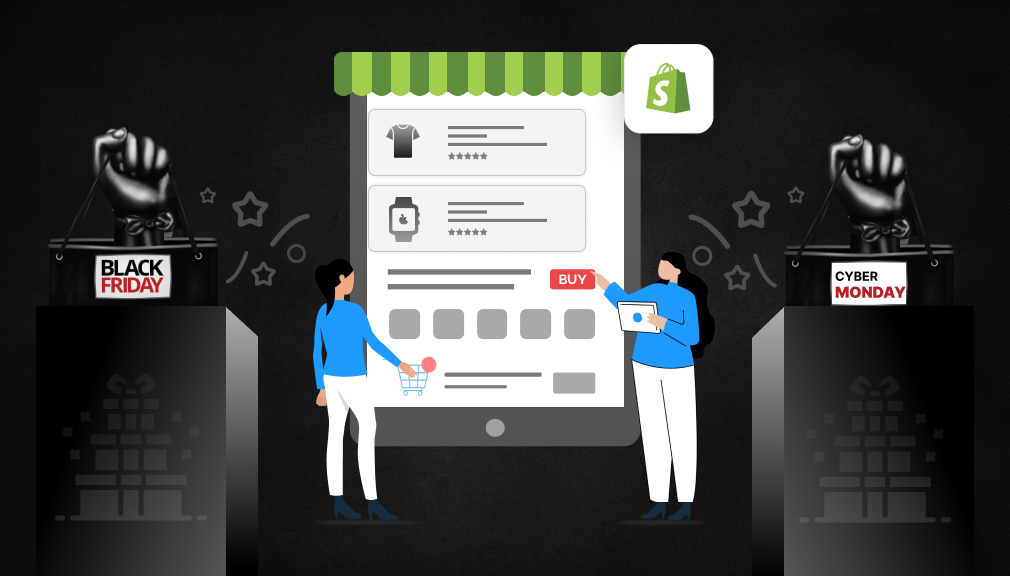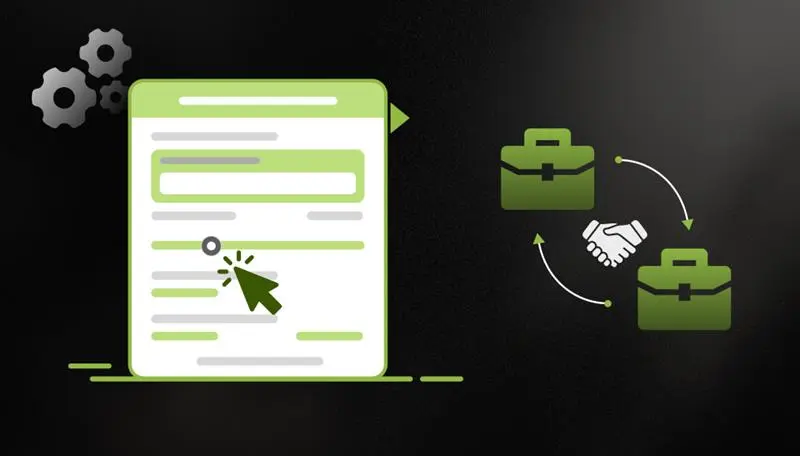Quick Summary: This guide walks you through how to add a ‘coming soon’ product on Shopify in 3 different ways. You will have step-by-step instructions, best practices, and things to avoid. This is for both those who are new to Shopify and those who have experience. You will leave with everything you need to add good coming soon pages that help convert visitors to customers.
With the craziness of online shopping, the challenge of keeping your customers stoked on the next item can make all the difference. Say you have a small clothing store on Shopify and a new, exciting line of eco-jackets about to be released in a couple of weeks. Before you tuck them away, put the “Coming Soon” feature right on your product page. This simple trick creates a buzz, captures emails of interested buyers, and ultimately sells more products when it is finally launched! The Coming Soon Feature on a Shopify store is incredible.
Since e-commerce continues to expand, the worldwide market will reach $4.8 trillion by 2025 (Source). Shopify is one of the preferred platforms for online merchants. With over 2 million merchants using the platform in 175 countries, features like this make many stores shine. In this blog, we’ll look at how to set up a Shopify coming soon product page, the importance of it, and helpful tips to make it work for you. It doesn’t matter if you are just starting with Shopify or using it for a long time; this post will have straightforward steps and real-life examples to ramp up the discussion.
From the basics to the advanced options, we will get into all of it as we continue to have you well on your way to knowing exactly how to add a coming soon product on Shopify without resorting to complex jargon. By the end of this post, you’ll be able to transform buzz into business and use a few simple clicks to get it done! Let’s get started!
What is a Coming Soon Feature on Shopify?
You are browsing through an online store, and you see a product you think is so cool, but it’s “not in stock.” Instead of a lame “Out of Stock” text, it said “Coming Soon!” with information about when the product will be back in stock, and a place for you to input your email. That, my friend, is a Coming Soon Feature on a Shopify product page.
So, to break it down, a Shopify coming soon product is a way to advertise products that are on their way to being in stock. It’s turning your disappointment into excitement. With e-commerce growing every year, projected global sales for 2023 are near $4.8 trillion. It’s a way for stores to get your attention before a new product is available to purchase. Shopify powers 10.32% of all online stores, and it’s a straightforward feature to use without any coding required for the most basic use.
Keep in mind that it’s not the same sort of thing as a “Coming Soon” landing page, like you would see for a new online store. This feature is for individual products. You can hide the “Add to Cart” button, display a badge on any products that are in a “coming soon” status, and then prompt you to sign up. This comes into play with the general “coming soon” trend with Shopify, which is sellers creating buzz and anticipation around a new product that is to come on their store to grow loyalty.
How Coming Soon Feature Works
So let’s take a look at how a Coming Soon feature on a Shopify product page works. Essentially, you have a teaser trailer about an upcoming movie, you give enough tease without giving up the entire movie.
To start, you will need to identify products that aren’t prepared yet. On your Shopify dashboard, navigate to Products > All Products. Select the product and add a tag like “coming-soon.” The tag will tell your theme to treat it differently.
As a next step, you can change your theme code or use an app to disable buying features. For example, you can go to your product template file (under Online Store > Themes > Actions > Edit Code) and locate the liquid code for the add-to-cart button. You can wrap it in an if statement like this: {% if product.tags contains ‘coming-soon’ %} Show a message instead {% else %} Show button {% endif %}.
When a visitor arrives at the page, they will see your product details/images along with a note saying, “Coming Soon – Sign up for updates!” You can use a form to collect their email addresses, linking to a tool like Shopify Email or an app.
This process works well with your inventory system; since the average conversion rate for Shopify is 1.4%, teasing a product can push this higher by generating desire. In practice, this integrates nicely into your inventory system.
Features of Coming Soon on the Product page
A Coming Soon feature on a Shopify product page comes with several key elements that make it effective. These are not just bells and whistles; there are real solutions for sellers and buyers.
- Custom Badges and Labels: Add some attention-grabbing tags like “Coming Soon” or “Notify me” on the product Page. Apps like SB Coming Soon Product‑PreSale let you design these to match your brand.
- Email Capture Forms: The heart of the feature. Visitors enter their email for notifications. This builds your list vital since email marketing drives 20-30% of e-commerce sales in many cases.
- Countdown Timers: Show how many days until launch. This creates urgency, much like flash sales that boost conversions.
- Product Details Tease: Display descriptions, specs, and photos without prices or buy buttons. It educates shoppers early.
- Mobile Responsiveness: Make sure it looks great on the phone, since most browsing happens there.
- Integration with: Mailchimp, Klaviyo, SendinBlue, and Omnisend.
- Analytics Tracking: You will be able to tell how many views and sign-ups you receive to help adjust this strategy.
- Customization Options: Changes the colors, fonts, and layouts of the notifications to improve the look of your store.
These features make Shopify pages more than static notices; they’re interactive tools. For instance, with 29% of U.S. e-commerce on Shopify, these help compete effectively.
Benefits of the Coming Soon Feature
Adding a Coming Soon feature on a Shopify product page and Collection page brings real advantages that go beyond just looking cool. It’s a smart move for growth in today’s e-commerce world.
It builds hype. By teasing products, you create anticipation, leading to higher launch-day sales. Studies show that products that drop with pre-hype can see 2-3x more engagement.
Email collection is gold. A coming soon on product page can capture leads at a rate of 10-20%, turning visitors into loyal customers. With Shopify’s 700 million+ buyers projected, this scales your reach.
Reduces bounce rates. Instead of leaving empty-handed, shoppers engage with the page, boosting session times key since average pages per session on Shopify is around 2-3.
Inventory management. It lets you gauge interest before stocking up, saving money on unsold items.
Brand loyalty. Sharing updates makes customers feel involved, increasing repeat visits.
Competitive edge. In a market where Shopify revenue grew 26% last year, standing out matters.
Easy integration with marketing. Use collected data for targeted ads.
Cost-effective. Basic setups are free, and apps start low.
Flexibility for seasons. Perfect for holiday launches or trends.
These benefits make Shopify coming soon a must for forward-thinking stores.
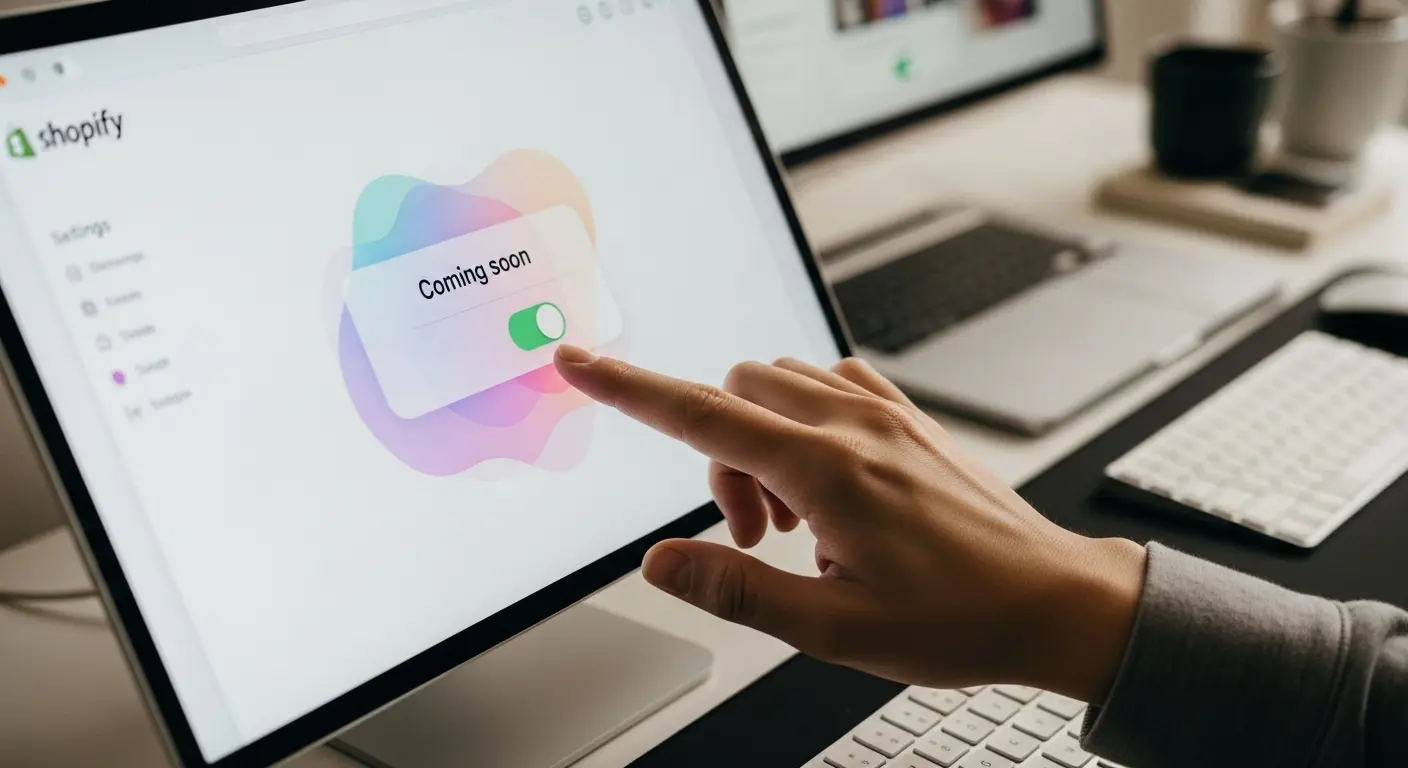
How to Add a Coming Soon Product on Shopify
I’m gonna expand upon the basic steps you’ve mentioned and give you a little more detailed, step-by-step guide to add a “coming soon” product to Shopify. I’m going into more detail with each step, simply adding tips, best practices, and updating for any changes for setups. The Shopify platform is always evolving, and they continue to roll out cool AI-driven tools, better app integrations, and never forget about the benefit of mobile-first.
Shopify powers over 2 million stores globally, and with the heightened e-commerce trends, which show hype building through teasers and waitlists to get people excited about what is coming in the future, and to address inflated cart abandonment rates.
There are free, manual ways to do this (through the built-in features of Shopify, and with some very basic code changes), as well as ways to be accomplished through app use for those who want to dig deeper while also getting more modifying functionality. No coding experience is needed for the basics, and possibly the occasional code snippet (again, appears where it’s helpful). Communicating the process and how to do it properly.
Just be sure to always back up your theme before agreeing to edit code. So now let’s go into more detail.
Step 1: Log into Your Shopify Dashboard
- Accessing the Admin Panel: Go to admin.shopify.com and log in. If you’re starting from scratch, don’t worry, Shopify allows 3 days of free viewing before needing a credit card. Once you’re in, take a moment to get familiar with the new interface. You’re going to see that the Shopify dashboard has added AI functionality, like product recommendation suggestions, and things listed on the home screen.
Step 2: Create or Select the Product
- Navigation and Setup: Click Products > Add product from the left side panel. Type a convincing product title – use something like “Limited Edition Eco-Tote Coming Soon.” Insert an exciting teaser description that captures attention and heightens anticipation, using phrases like “made from eco-friendly materials and it’s exclusively available for early access” before shipping to the rest of your customers.
- Inventory and Availability: Set Inventory as either “Not tracked” or manually to 0. For Availability, leverage the online store channels or process manually, so you can uncheck channels and not have accidental purchase opportunities for your customer. Again, don’t forget to add “coming-soon”, “pre-launch”, or “waitlist” tags for easy filtering later.
- SEO Optimization: Complete the meta title and meta description with signed keywords such as “coming soon [product name]” to enhance searchability. Use the SEO checker that Shopify has built in to suggest added keywords.
Step 3: Edit Your Theme for Basic Setup (Free Method)
- Theme Customization: Go to Online Store > Themes > Actions > Customize on your active theme. Select the Product template.
- Adding Conditional Logic: For a simple free setup, hide the “Add to Cart” button and display custom text. In the theme editor, add a Custom Liquid section to the product page. Use this Liquid code snippet:
{% if product.tags contains ‘coming-soon’ %}
<div class=”coming-soon-banner”>
<h2>Coming Soon!</h2>
<p>Sign up to be notified when this launches.</p>
<!– Simple form placeholder –>
<form action=”/contact” method=”post”>
<input type=”email” name=”contact[email]” placeholder=”Enter your email” required>
<button type=”submit”>Notify Me</button>
</form>
</div>
<style>.product-form__submit { display: none; }</style> <!– Hides Add to Cart –>
{% else %}
<!– Regular product content –>
{% endif %}
- This checks for the “coming-soon” tag and replaces the buy button with a notification form that sends emails via Shopify’s contact form.
- Alternatives Without Code: Use theme sections like “Rich Text” for adding banners. Also, inside the free visual editing of the Shopify theme editor, they allow you to drag-and-drop badges (e.g., “Coming Soon” overlay on images).
- Mobile Check: Preview on mobile to ensure the form is responsive.
Step 4: Use Apps for Advanced Features
- App Store Navigation: From the dashboard, click Apps > Shopify App Store. Search for “coming soon” or “pre-order” over 8,000+ apps available.
- Top Picks (Updated Ratings and Features):
- SB Coming Soon Product‑PreSale: It’s ideal for pre-orders, the app adds Coming Soon and Notify me badges. It’s free for limited use. The app also has an email integration for automated notifications.
- Installation and Setup: Installation/Setup: You can install it with one click, and then go to the app’s dashboard. Choose your product, select the badges/forms, and customize as you wish (such as color matching to the brand).
Step 5: Add Email Integration
- Built-in Options: Use Shopify’s Marketing > Automations to create flows like “Coming Soon Sign-Up” that automatically send emails on form submission.
- Advanced Tools: If you have the advanced tools (free Shopify Email, up to 10k emails per month, or a free tier of 250 contacts in Klaviyo, a third-party email service), set up a flow in Klaviyo: Sign-up → Welcome Email → Launch notification.
- Data Compliance: When collecting emails, ensure you’re compliant with whatever data regulations during the entrance form with an opt-in checkbox. Track your sign-ups in a separate list tagged “coming-soon-[product]”.
- Enhancement: Personalize your emails with product teasers to promote sign-ups during your launch. In Klaviyo, leverage AI to suggest subject lines!
Step 6: Test the Page
- Preview Modes: You can see the desktop/mobile theme customizer preview. Use incognito mode to see what a new visitor would see.
- Functionality Checks: Test sending emails, check to see that badges appear as they should, and check to see that the “add to cart” is hidden. Use tools such as Google PageSpeed Insights for page load times, too.
- Edge Cases: Test some variants, out of stock scenarios, and check for international users too (currency/language).
Step 7: Go Live and Monitor
- Publishing: Change the product to “Active,” add it to the collections/navigation, and promote on social or POS, if utilizing it.
- Analytics: For example, in Analytics > Reports, examine metrics like pageviews, sign-ups, and bounce rates. Utilize Google integration if needed.
Step 8: Launch the Product
- Transition: Once the product is ready, remove the “coming-soon” tag, update the inventory amounts, and re-enable the “Add to Cart” button. For apps, change to “live” mode.
- Notifications: If applicable, send a bulk email to subscribers via your integrated tool, which could include discount invitations for those who were waitlisters (for example, you could have provided a 10 percent discount).
- Smooth Rollout: When determining your schedule to launch your products, utilize the available analytics to identify times that are typically high-traffic hours.
Step 9: Optimize Based on Data
- Review Metrics: Check Shopify analytics to determine sign-up rates, conversion rates post-launch, and heatmaps via Hotjar integration (and potentially on other apps in the market when the time comes).
- Adjustments: If bounce rates are higher than 40%, it’s time to make revisions, including descriptions and adding videos. A/B testing badges and forms will serve you long-term to streamline strategies.
- Long-Term Strategy: Even as a part of a future launch, and high sign-up-to-purchase rates of 20-30%, could be feasible.
- Market Context: Given that business formations in the U.S. are steady, start-up endeavors need to better stand apart in a crowded field.
This expanded approach follows best practices of the pros’ standby – the Shopify Blog, to emphasize scalability around tagging. Set up time of 1-2 hours to set up, plus time to add in-app and anything else. This will increase engagement 25-50% as an impending event/thing is launched, leveraging e-commerce benchmarks.
Key Takeaways
- Coming soon, a feature that helps to build customer interest and collect email addresses
- Setting up a Shopify coming soon product is simple with built-in tools or apps
- Proper timing and clear messaging boost conversion rates
- Email collection from coming soon pages can increase launch-day sales by 30-50%
- Mobile optimization is crucial since 70% of shoppers use mobile devices
Conclusion
Putting a Coming Soon feature on a product page on Shopify is a retail game-changer. Waiting is winning when you use it to build anticipation, gather engagement, and create buzz for being released. With e-commerce on the upswing and Shopify demonstrating the proof by reaching a $92.17 billion market cap in September 2024, you can use this feature to tap into that growth.
Harnessing a Coming Soon feature is easy to set up, whether you just use tags or an app to power the product. Just remember to be creative, have fun testing out variations, and work integrated with your marketing approaches. Once you get the hang of how to add a coming soon product on Shopify, get ready for your engagement to go up!
Believe it? Go to your dashboard and get started, your audience and your sales will appreciate it!
FAQs
How long should I run a coming soon campaign?
It’s best to wait two to four weeks at most. You want your audience to have anticipation but not impatience. For big launches or seasonal products, you can stretch it to six to eight weeks, as long as you’re keeping subscribers engaged with consistent development updates.
Can I collect pre-orders through the coming soon pages?
Yes, many retailers do combine coming soon messaging with pre-order functionality. Typically, this would require some apps or custom development, but it can also help generate revenue before the product is available.
Should I show prices on products coming soon?
In most cases, yes, customers do want to know pricing, to feel informed enough to decide if they want to be notified. You can always hide pricing if you’re still finalizing, though.
How do I handle product delays?
Let your subscribers know ASAP about a delay. Apologize for the inconvenience, state a new timeframe, and think about whether you can give them a small discount or other bonus to retain good faith.
What’s the best way to design email notifications?
Keep your email announcements simple and concise when it comes time to launch the product. Think about using product photos, some key features, pricing, and a clear CTA button. Your emails must be optimized for mobile. Most people will check their email on their phone.
Can I use coming soon features for restocked items?
Yes- “back in stock” notifications will serve the same purpose as “coming soon” features that re-engage customers who previously showed interest in those out-of-stock products.
Do coming soon pages help with SEO?
Yes! More detailed coming soon pages can rank in search results and provide organic traffic to your site. Just be sure to include relevant keywords in the title and descriptions, and provide useful content around upcoming product features.
How many reminder emails should I send?
Don’t send too many reminder emails and annoy your subscribers. One reminder email to customers that shows interest 1-2 weeks from launch is probably plenty, and then notification of the launch.

Shopify Expert
Dipen Panchal, Shopify Tech Lead at Setubridge Technolabs, brings over a decade of expertise as a Shopify Expert. Passionate about e-commerce growth, he specializes in UI/UX design, crafting intuitive, engaging solutions tailored for merchants and B2B clients to enhance user experiences.

